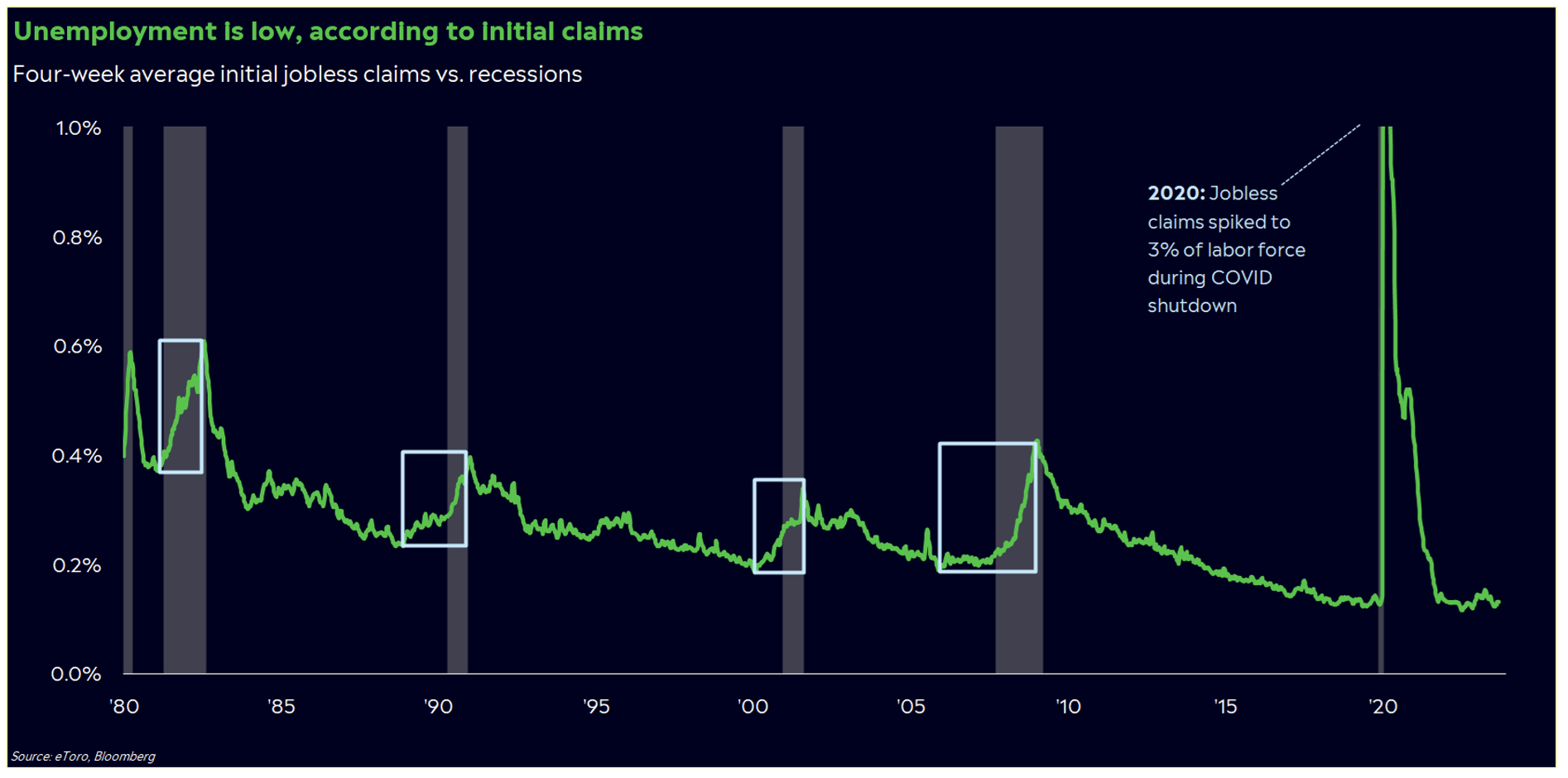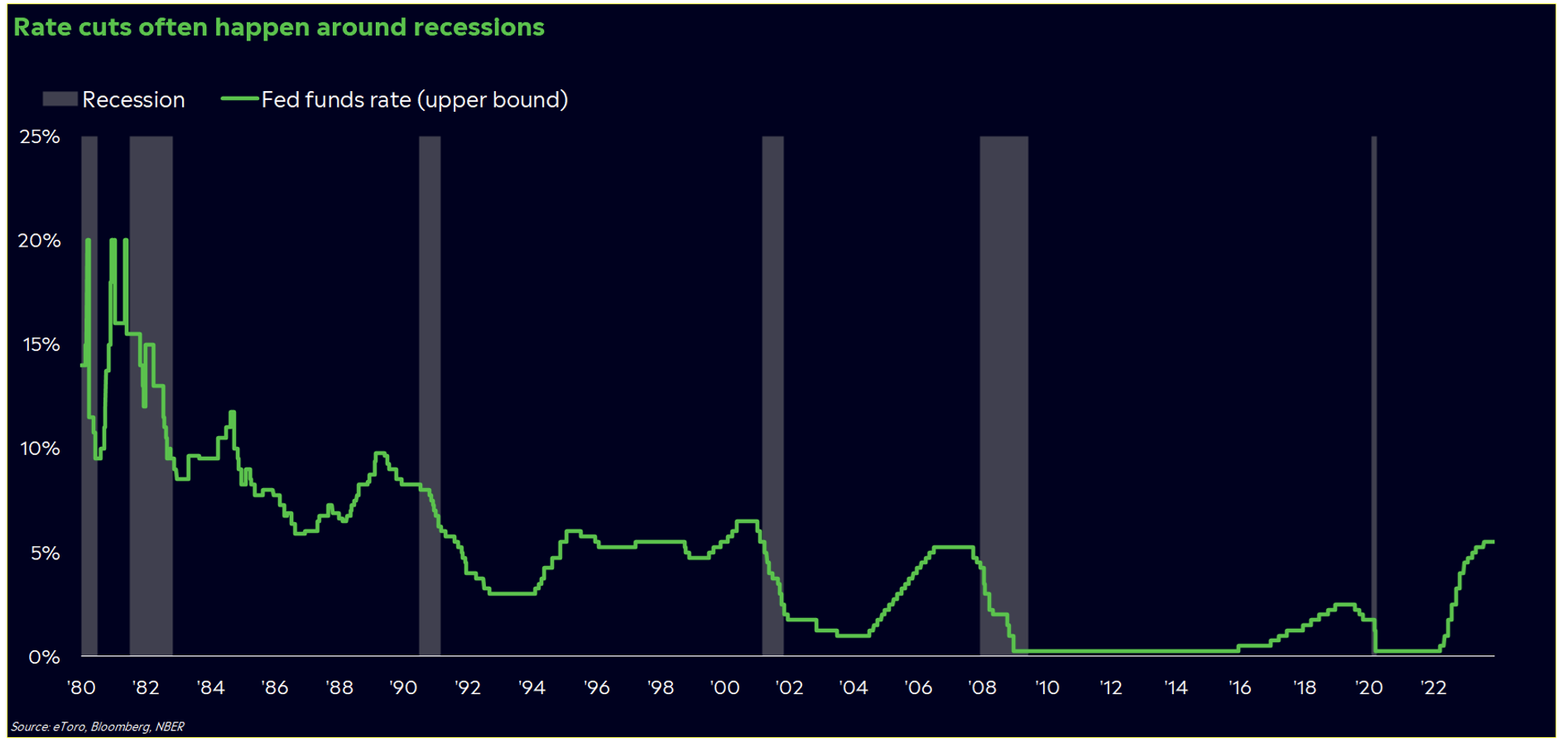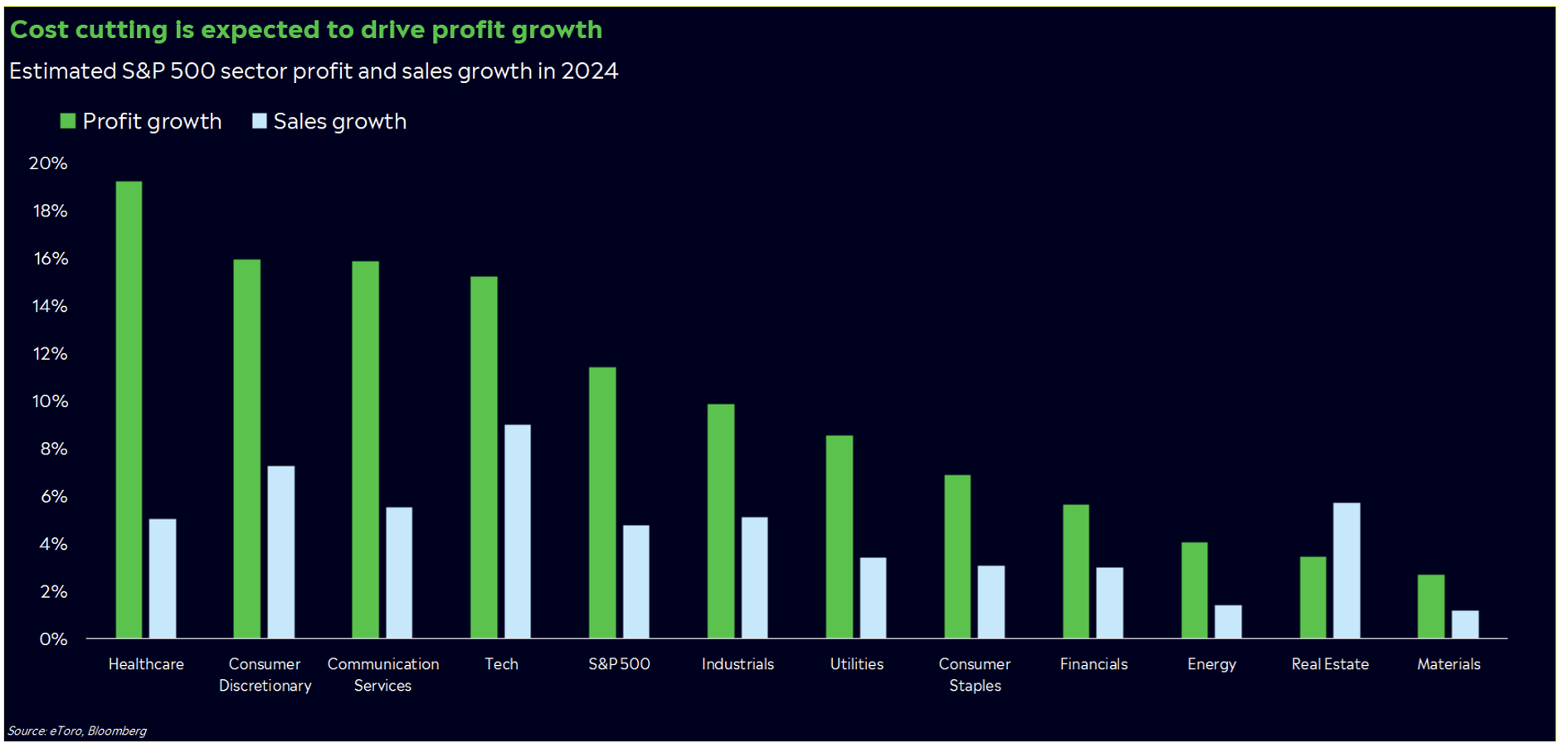By Callie Cox
Today’s market environment is a bit like a Rorschach test. We’re all looking at the same inkblot, yet we see different shapes: higher prices and thinning opportunities, the end of inflation amid sky-high prices, and a bull...or a bear, depending on who's looking.
They’re not wrong, either. Rorschach tests are used to judge a patient’s perception and emotional reasoning. The important part isn’t what you’re seeing, but why you see it. In 2024, we’ll all have to reckon with our own personal Rorschach tests. Recession calls are still dominating the airwaves, but what you actually see in your own portfolio could vary. Problem is, if markets see things differently than you, it could end up costing you money and opportunity.
So let me walk you through my own Rorschach test.
Image 1: A stop sign
Let’s start with the obvious: a stop sign. The U.S. economy is slowing, and it may even stop growing in 2024.
Americans’ urge to spend on Taylor Swift tickets and lavish vacations has been the bedrock of the economy these past few years. You can thank the job market for that. Unemployment has stayed below 4% for nearly two years. Job openings are aplenty, at least on a broader scale. Wages are growing at a steady pace. When people are making money, they’re more likely to spend it.
Still, hiring conditions have been trending in the wrong direction for a while. You can see that in rising claims for unemployment benefits, which is often an early sign of spiraling unemployment. The supposed recession train is creeping closer, but it’s not here yet, despite what the housing market and manufacturing may tell you. That stop sign could be more like a speed limit sign.
Either way, the job market is the key to the economy’s future. Watch jobless claims and hiring in particular. We’ve seen initial jobless claims climb to an average of 0.3% of the labor force (equivalent to about 500,000 claims today) before the last seven recessions started.

After years of push and pull, will we or won’t we, a recession is still a huge risk you should have on your radar. After all, recessions have coincided with seven of the last 10 S&P 500 bear markets. This inkblot is looking bleak. But wait, now I’m seeing…
Image 2: A mountain
Or maybe a hiker — the Federal Reserve — coming down the mountain. Fed rate hikes have been the story of the past two years. But over the past few months, the Fed has dropped a lot of hints that we’re at the top of the mountain. The hints started in July, when Fed chair Jay Powell referred to “downside risks” in the economy, implying the Fed would be willing to adjust rates if needed. Five months later, markets finally believe the Fed’s words.
Now, bond markets think rate cuts are a certainty in 2024. And we’d agree, if we had to guess. The Fed has made so much progress on inflation that they could probably let up on the brakes a little. Combine that with a weakening job market, and there’s even more impetus to cut rates.
But the story isn’t just rate cuts. It’s the mixed messages we’ll get along with them. In recent history, rate cuts have earned a bad reputation as a last-ditch effort to save the economy. Since 1980, 55% of rate cuts have happened in the 12 months before — or during — recessions, and five out of 10 rate cut cycles have started during bear markets.

The evidence is damning, but I’d encourage you to re-think the purpose of rate cuts in this day and age. We could see a different type of cuts next year — a minor policy adjustment that helps both markets and the economy. Why? Because the stock market is extra sensitive to rates.
Stocks’ rate sensitivity has been best expressed through high-duration stocks, which are expected to generate more profits in the future versus today. Currently, high-duration sectors account for about half of the S&P 500’s market cap. Tech, communication services, real estate, and healthcare stocks fall into this high duration group, according to a Bloomberg Intelligence analysis.
On top of that, the market and the economy look drastically different. Services — eating at a restaurant, getting a haircut, renting a house — account for 70% of consumer spending, yet services-based stocks only make up 45% of the S&P 500. Even if we see a recession and rate cuts in response, that may not mean the market falls apart.
These days, the stock market is more influenced by rates, while the economy is more influenced by consumer patterns. The hiker is coming down, but that doesn’t necessarily mean broader stock prices are as well.
Image 3: Bags of cash
I’m seeing bags of cash, too. Hopefully because the economy will skirt a recession and all of our portfolios will profit handsomely in 2024. But that’s not quite it. I’m seeing bags of cash because people are sitting on a lot of cash — and by extension, fewer stocks, crypto, and bonds. Money market assets have grown by more than $1 trillion this year, the most in two decades.
Cash has been the warm, fuzzy blanket that some have needed in a perilous year of headlines and uncertainty. But cash doesn’t often stay in cash for long. If rates come down, we could see savings start trickling back into markets soon.
Stocks tend to follow earnings and the economy over time. Still, portfolio allocations are important to watch. People have had big feelings about every asset class this year, but the biggest surprise has been the attraction to cash. If cash is mainly being used as a hiding place for a recession, we may see people’s savings stay put. But if people are chasing 5% rates, that money could quickly make its way back into stocks and crypto if the Fed cuts.
It’s not just American households, either. Corporate America is holding a lot of cash, and it’s set to make more in 2024 if Wall Street is right. S&P 500 earnings are expected to grow 11% in 2024, according to Bloomberg estimates. All 11 sectors are expected to see higher profits next year, too.

Companies’ cash adds a weird tension to recession calls. Will corporate America lay off people if they’re making more money? The answer is more complicated than you think. Wall Street expects lower expenses and cost-cutting to be the main driver of profits next year, which isn’t the best story for either your portfolio or your employment. Business risks are still high, and companies still haven’t laid off a lot of people, even though they’ve cut in other areas.
Don’t fret, though. Higher profits are a good thing, and they can help cushion markets in times of distress. If anything, strong profit expectations show how mild an impending slowdown or a recession could be.
Image 4: A weird-looking bull
Ah, this is something I’ve seen before. 2023 was the story of the weird bull market. Portfolio purgatory, as we called it a year ago. Regardless, it still looks to be the early innings of a bull market with the S&P 500 up nearly 30% since the October 2022 low. Another year of confusion and uncertainty could be ahead of us, and there are risks abound.
You’re not navigating this alone, though. We’re right here beside you, constantly evaluating the inkblot. Here’s how we’re planning to approach this weird bull:
Don’t underestimate this market. We’re in a bull market until proven otherwise. The proof needed? A recession. And even if we hit a recession, stocks could stand strong because of lower rates.
Focus on the rate cut trade. Think about high duration sectors as we move towards rate cuts. And as we progress through the year, slowly start rotating back into rate-sensitive cyclical stocks. 2024 could be a rising tide that lifts more boats than this year.
Hug your teddy bears. Look for “teddy bear” stocks, too — big, profitable companies with strong balance sheets that you can hug tight if a recession hits. The broader market may not flinch, but smaller, unprofitable companies could have a harder time with economic weakness.
Don’t forget about bonds. Treasuries are a classic recession hedge, and they still look way too expensive with the 10-year yield at 4%. Bond ETFs can be a good, accessible way to buy into the Treasury market.
Remember that even healthy markets go up and down. Stay guarded — especially around economic data releases and jobs reports — as you look for short-term opportunities.
Be careful who you listen to. Markets are always a Rorschach test. We’re all here trying to interpret the same signs. But the context matters. The inkblot has changed drastically over the past few years. Don’t lean too much on your priors, and stay focused on your own goals when making decisions.
If you want to read more research and analysis from eToro, check us out here.
The views and opinions expressed herein are the views and opinions of the author and do not necessarily reflect those of Nasdaq, Inc.

